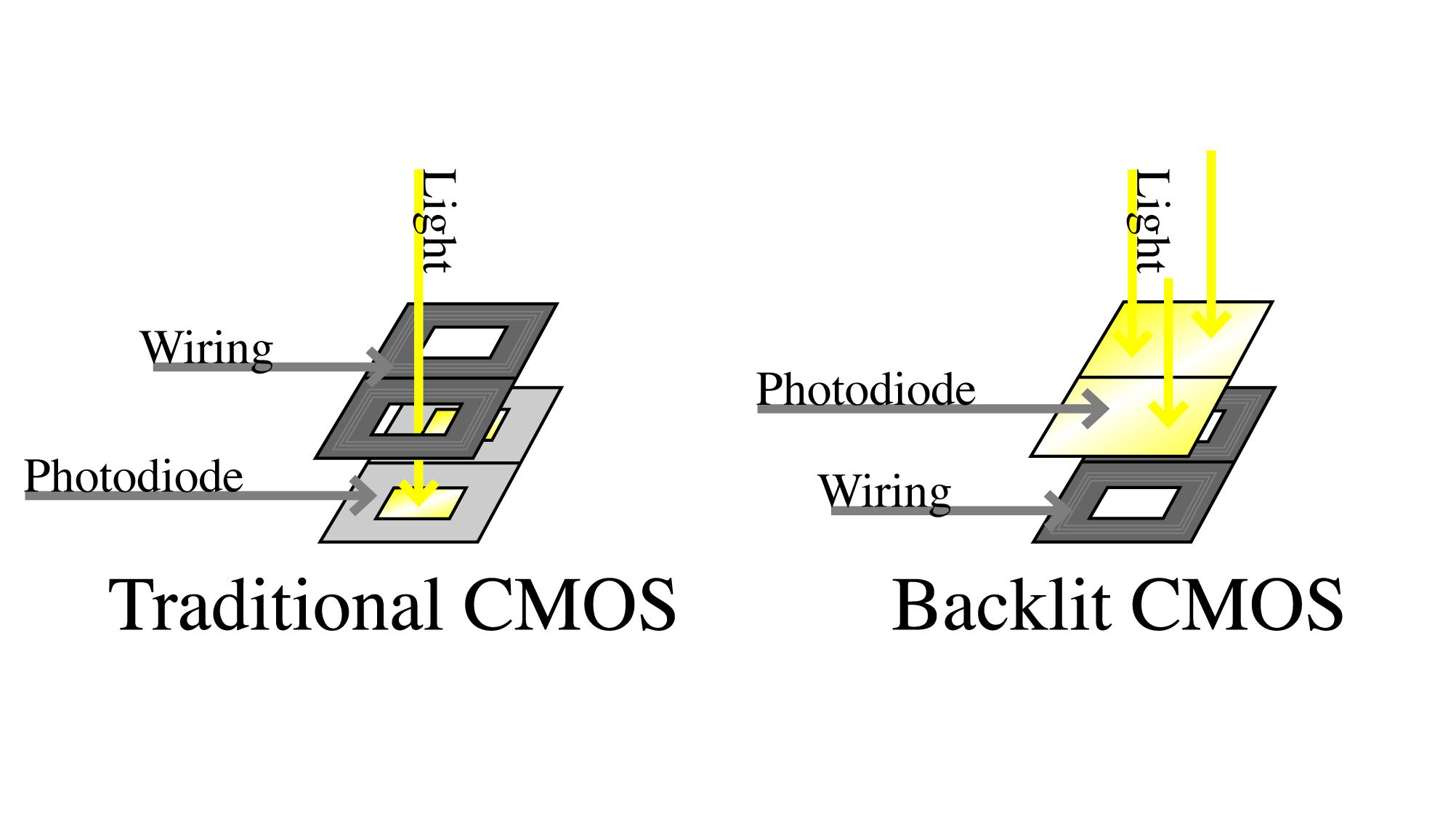What is a backlit CMOS sensor?

The solid state image sensors used in today's digital cameras come in two broad flavours: CCD and CMOS. A Charge Coupled Device (CCD) sensor is an older style of technology that's gradually being overtaken by Complimentary Metal Oxide Semi-conductor (CMOS).
CMOS is a type of camera sensor that's constructed on one large piece of silicon so that it can include the electronic circuitry for controlling the sensor by mounting them on the surface of the silicon instead of being contained in a separate circuit.
Traditionally CCD's had the advantage of creating less noise, but they are also more expensive than CMOS sensors. The big advantage is that CMOS technology today is that it uses less power than other types of chips, and technological developments have managed to keep noise levels much lower than was previously possible. This makes them perfect for imaging sensors in cameras where digital noise is a real problem, especially when shooting in low-light conditions.
Back-illuminated CMOS
A backlit - or back-illuminated - CMOS sensor is different from a regular CMOS sensor, in that all the wiring and circuitry that's used to carry the electronic signals from each photosite or pixel is located at the back of the sensor instead of the front.
The photosites on most sensors consist of a micro lens, then some wiring, and behind that the photosites that record the light falling on the sensor. By removing the wiring and circuitry from the area between the lens and the photosite, far more light is able to reach the photosites, and this in turn means the image being captured needs far less amplification.
In practice, the design of a backlit CMOS sensor means that cameras fitted with them can record images in lower light levels and with much less digital noise.

Alternatively, it means you can cram far more photosites on to a single sensor with the same noise levels as a non-backlit sensor with far fewer pixels. This is very important on smaller compact cameras such as the Canon IXUS 240 HS or Sony HX20V, where you can often find up to 16 million pixels populating a very small image sensor.
Sign up for breaking news, reviews, opinion, top tech deals, and more.
More light
On a 1/2.3 sensor with 16 megapixels, the amount of light that can be collected by each photosite is tiny. This invariably results in the signal having to be boosted or amplified by a large amount, and amplification always introduces noise into a signal, which then results in photos with lots of fuzz and muck that just makes shooting in low light problematic.
A drawback with backlit CMOS sensors is an increased tendency for crosstalk of the electronic signals that can cause a mixing of colours and certain types of noise issues.
Also, because the silicon wafer is thinned during manufacturing, the sensors are more fragile to produce, and this in turn means lower production yields and higher costs. This is being addressed through new manufacturing processes, and as production levels are ramped up, so the cost of producing these advanced image sensors is starting to fall.
It's possible that soon most cameras will incorporate backlit CMOS sensors. We are also already seeing them become standard on smartphones where low noise and low-energy requirements are very important.